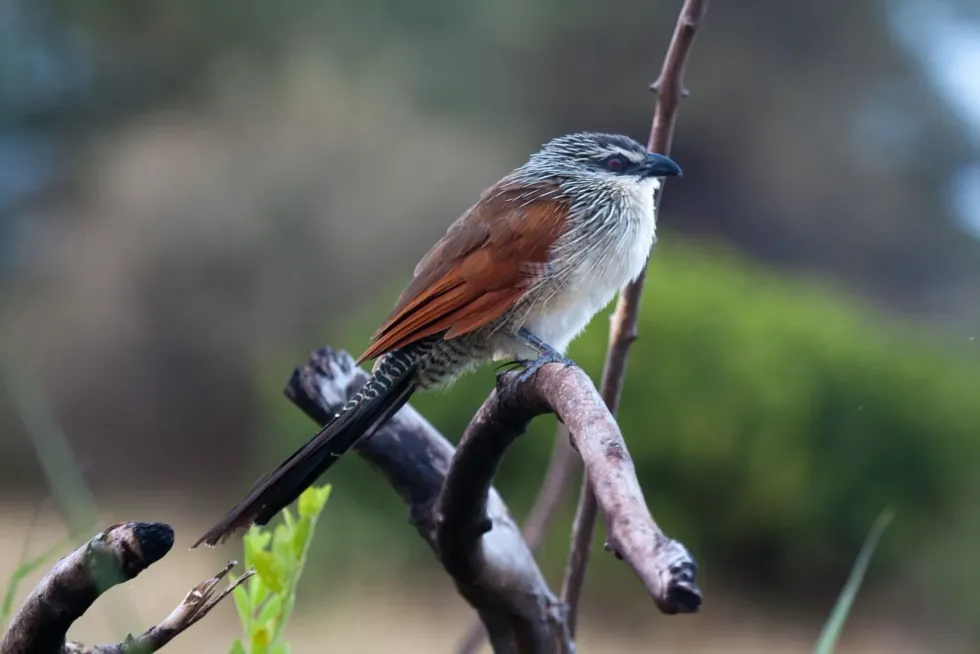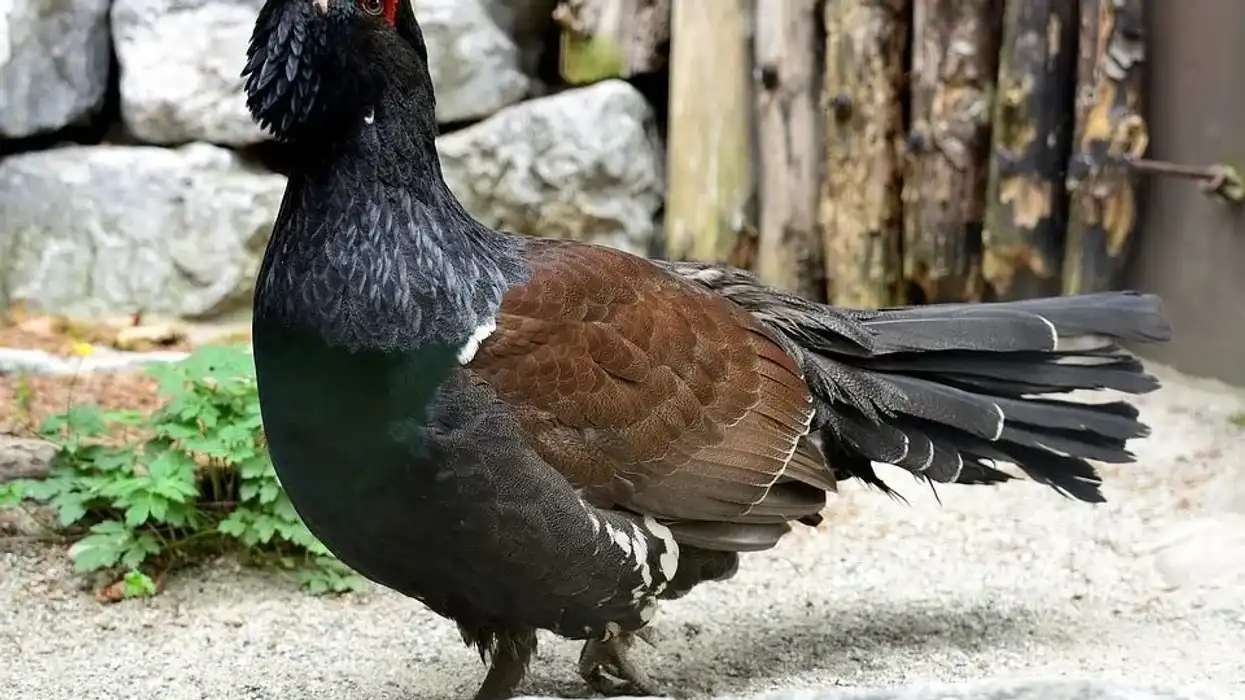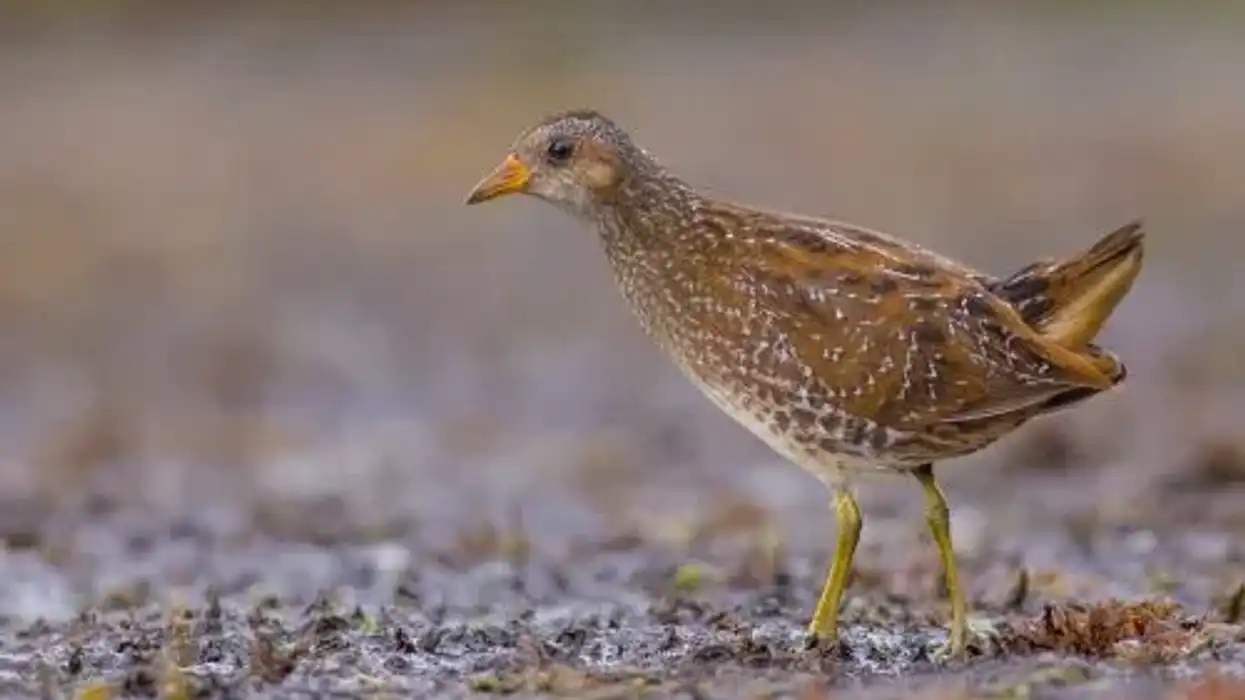The white-browed coucal (Centropus superciliosus), also known as the lark heeled cuckoo or water bottle bird, is a large bird native to eastern and southern Africa. Belonging to the cuckoo family of birds, they are known for their loud and distinctive call which can be heard from miles away.
With its broad tail and long tail feathers, it is easily identified in its natural habitat.
The diet of this spectacular bird consists mainly of insects such as beetles, caterpillars, ants, and termites. However, they will also sometimes scavenge small mammals such as bats or rodents.
There are more than 170 species of cuckoos and coucals in the world. These birds are found in many different habitats, from rainforest to the desert, and the plains of southern Africa to the European countryside.
This bird is native to eastern and southern Africa, as well as southwestern Arabia. It’s a non-migratory bird that prefers dry habitats like savanna and grassland.
To learn more about white-browed coucal habitat, call, its diet, eggs, young ones, reproduction, and more, keep on reading.
For more such facts on other striking species, check out lesser coucal facts and greater coucal facts.
White-browed Coucal Interesting Facts
What type of animal is white-browed coucal?
The white-browed coucal (Centropus superciliosus) is a species of bird from the Cuculidae family.
What class of animal does a white-browed coucal belong to?
The white-browed coucal (Centropus superciliosus) belongs to the class of Aves.
How many white-browed coucals are there in the world?
The white-browed coucal (Centropus superciliosus) is frequently seen in their habitat range. However, their exact population size is not yet estimated.
Where does a white-browed coucal live?
The white-browed coucal (Centropus superciliosus) or water bottle bird is a type of bird found in many parts of the world. These birds are mainly found in sub-Saharan Africa.
It has also been spotted in Asia, southern Africa, and Australia.
Its distribution range includes Angola, Benin, Botswana, Burkina Faso, Central African Republic, Chad, the Democratic Republic of the Congo, Cote d'Ivoire, Ethiopia, Gabon, Ghana, Guinea-Bissau, Kenya, Liberia, Mali, Mozambique, Niger, Nigeria, South Sudan, Tanzania, Uganda, and Zambia.
It's found in the tropical and subtropical regions of southern Africa, mainly south of the equator, but also as far north as Ethiopia.
What is a white-browed coucal's habitat?
The white-browed coucal (Centropus superciliosus) lives in broadleaved forests, rainforests, plantations, orchards, and gardens. In the wild, this species lives in forests and woodlands. This bird lives in forest margins, thickets, grasslands, open scrub, and plantations. They live in a variety of habitats from coastal areas to up to 14763 ft (4500 m) in elevation.
Who do white-browed coucals live with?
The white-browed coucal (Centropus superciliosus) is a species of a solitary bird outside of its breeding season. However, not much data is available on their behavior.
How long does a white-browed coucal live?
According to the very little data that is available, they can live for up to 14 years.
How do they reproduce?
This species breeds throughout the year but mostly during the wet season. Breeding occurs from March to June in Ethiopia and April to July in Ngong areas with three to five eggs laid in their own nests.
However, cuckoos are believed to be parasitic as lay their eggs in natural tree cavities or some old woodpecker holes. However, this coucal is a non-parasitic bird.
It builds its nest in trees or shrubs with an open canopy. The average clutch size for this species is about three to five eggs that are incubated for 19 days.
The white-browed coucal (Centropus superciliosus) is a shy bird but males will sing out loud to attract females during mating season. The male birds hold the responsibility of constructing the nests and incubation is done by both the male and female birds.
What is their conservation status?
As their global population is steady and not declining, these birds are a species of Least Concern, according to the IUCN Red List. They are quite widespread in their range.
White-browed Coucal Fun Facts
What do white-browed coucals look like?

The white-browed coucal is a large cuckoo-like bird found in sub-Saharan Africa with a long tail. It is about the same size as a crow and has an upright posture.
Both the sexes appear to be similar. The adult birds have a dark black-brown crown and rufous dark plumage. They have a white supercilium, chestnut wings, a black long tail with streaks of green and the tail is white at tips.
These birds have beige or creamy white underparts, dark rump, red eyes, feet, and legs are grayish-black and a black bill. Their distinctive white brows are responsible for the context behind their name.
The young ones have streaks of rufous on their crown and bare upper parts. Moreover, the young chicks have dark upper parts and a faint beige supercilium.
How cute are they?
These birds are cute medium-sized birds with a fluffy texture, complimenting coloration, and they really are quite cute. Although they are very rarely seen because they are sneaky and shy birds.
How do they communicate?
These birds have a myriad of calls, with one being the 'bubbling' call. Their call sounds like water running or pouring from a bottle.
This is the interesting reason as to why they are called 'the water bottle bird'. Belonging to the cuckoo family of birds, they are known for their loud and distinctive call which can be heard from miles away. During their breeding season, these birds make a harmonious call to lure the female birds.
How big is a white-browed coucal?
This bird is 14-17 in (36-42 cm) in size as they are medium-sized birds. They are bigger than a palm warbler.
How fast can a white-browed coucal fly?
Their flight speed is unknown, however, they travel long distances.
How much does a white-browed coucal weigh?
These birds weigh somewhere between 5-6 oz (150-175 g).
What are the male and female names of the species?
As male and female birds are called cocks and hens respectively, white-browed coucals can be referred to as the same.
What would you call a baby white-browed coucal?
A baby white-browed coucal is called a chick.
What do they eat?
These species feed on insects such as beetles, caterpillars, ants, and termites, bats, fruit, nectar, and plant matter. They also feed on lizards. Their diet depends on availability and may vary.
Are they dangerous?
No, they are not dangerous. They do not cause any harm to humans.
Would they make a good pet?
No, they are very shy and sedentary birds. It is inadvisable to cage them.
Did you know...
As these species are called 'water bottle birds' due to their unique call, they are believed to indicate impending rainfall in their habitat.
Different types of Coucal
There are more than 25 subspecies of coucal in the genus, Centropus. Burchell's coucal (Centropus burchellii) is a southern subspecies that belongs to the same family, Cuculidae. There are over 27 subspecies in the genus which are all mostly found in tropical, or thickly vegetated areas.
Why is it called white-browed coucal?
They are called so, because of their distinctive white brows.
Here at Kidadl, we have carefully created lots of interesting family-friendly animal facts for everyone to discover! Learn more about some other birds from our Diederik cuckoo facts and black cuckoo facts pages.
You can even occupy yourself at home by coloring in one of our free printable bird coloring pages.
Main image by Adrian Valenzuela.









